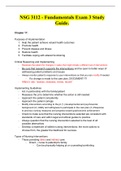Summary
Summary Greek theatre - the nature of tragedy
- Module
- Greek theatre
- Institution
- OCR
Notes on: - origins of tragedy and how it developed during the 5th century BC - including its relationship to satyr plays, the contribution of Aeschylus, Sophocles and Euripides, use of actors and the chorus, use of masks, costumes and props, common themes of tragedy, relationship between the cultu...
[Show more]













